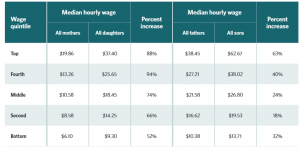
1 – Landlines
Landline telephone services are rapidly being replaced by wireless phones. Two in five households had switched to wireless the first half of last year, up slightly from the first half of 2012. In the past decade, some 90 million adults, 38 percent of the population, became wireless-only. Scrapping the landline allows you to drop one of the monthly bills. And you needn’t be restricted to a cellphone. There’s Skype, which is free and puts you in touch with friends and family around the world via smartphone and other devices. FaceTime video may be free with a Wi-Fi connection. MagicJack Plus can be connected to a USB port, computer or regular phone router. It may cost $49.95 for the device and six months of service, after which the monthly service is $1.67 to $2.50 per month. Some folks may want to retain their landline as well. There is more security in case of disruptions caused by bad weather or other problems.
2 – GPS
Before investing up to $300 to purchase a GPS device, look at new developments that serve the same purpose. There are GPS apps on many smartphones, a fair number of them free to upload. A growing number of new cars come with a GPS option. Forty-nine percent of 2013 vehicles have a navigation system.
3 – Cable Television
Cable television is being replace by other technologies. Since 2004, subscribers to cable have been dropping out in favor of services such as Hulu and Netflix NFLX, which provide comparable service at a much lower cost. Using an Internet connection, consumers can stream many cable shows, news programs and sports events, as well as movies, directly to their TVs. Some channels offer access to programs through their websites. These services are available primarily to those who don’t care if their shows have been previously aired and who are willing to give up live programming.
4 – Hotel Rooms
The demand for hotel rooms, along with their rates, are going up. There are some alternatives, including apartments and homes where prices are lower and there is usually more space. The average daily rate at U.S. hotels is $110.59, up 4.1 percent from 2012 and 12.6 percent from 2010. The average is expected to rise to $115.68 in 2014, according to PricewaterhouseCoopers. Agencies such as Airbnb and Vacation Rentals By Owners, offer an assortment of homes you can rent. Some provide free airport pickup and drop-off services. This approach is particularly effective for large groups or families traveling together. Advantages may include many bedrooms and facilities for meal preparation. The downside: such arrangements usually offer less security than do hotels.
5 – DVD & Blue-Ray Players
DVD and Blue Ray player sales are down. Sales for DVD and Blu-ray units totaled 21.3 million in 20l2. That’s down 20-plus percent from a year prior and 24.8 percent from 2010. More people are opting to stream movies from Internet services such as Hulu and Netflix. Many gamers can use their consoles to watch DVDs.
6 – Computers
Desktop and laptop computers are becoming obsolete to a degree. Tablets perform the same functions and they’re portable. The price differential is considerable, with Apple’s IMac starting at $1,299, compared with an iPad at $299. Graphic designers and traders, obviously, will find it necessary to stay with large screens, but for the vast majority of users, the smaller versions fill the bill. Worldwide shipments of PCs fell 4 percent in 2012 over the prior year, an indication that PCs are losing ground in the computer market.
7 – Leg Room On Airplanes
Airlines are changing their approaches to giving passengers more amenities — for a fee. It has been common practice to provide an extra three to six inches of legroom in coach for an additional cost of up to $180. The seats often are in the exit rows or the first row in economy. But for a payment of $100 to $200, a traveler can be upgraded to business class, where seats are more comfortable and service is more accommodating. These are options that used to be reserved for frequent fliers, but now they are offered to any passenger willing to pay a bit more when they check in or at the gate.
8 – Credit Cards With Rewards
Credit card companies are altering rewards programs. Consumers should be wary now of promotions that offer rewards in points or miles. Many of the card issuers are requiring a greater outlay by the consumer to get the “free reward” they could have obtained earlier with fewer points. Many of the cards now come with annual fees ranging from $30 to $75. Instead, consider a credit card with a cash-back offering, a much more straightforward plan. The usual kickback is 1 percent to 5 percent of the number of dollars involved in the purchase.
9 – Digital Cameras
Digital cameras are suffering an identity crisis. With competition from cell phones with photo capacities and an expanding range of options for picture-takers with particular goals in mind, there is a confusing array of choices. Digital point-and-shoot cameras that have been the rage for years are seeing a decline in demand. Sales are down some 44 percent since 2012 and they’re expected to keep dropping. “Real” photographers are choosing larger, DSLR cameras, while those bent on action shots are finding models such as the Go-Pro best meet their needs. Be sure that what you get is what you really want.
10 – Credit Reports
By law, credit card reports cannot be more than $11.50 per report. Your credit score is often not included in these reports. You can order three different FICO scores – one from each credit reporting bureau – but it will cost you – $59.85. Some credit cards like Discover Card are showing customers credit scores every month when consumers sign on to their accounts. You can’t beat free credit scores!
As a consumer we want you to save money on all your purchases in 2014. If you know about other good savings tips, please share with us!




